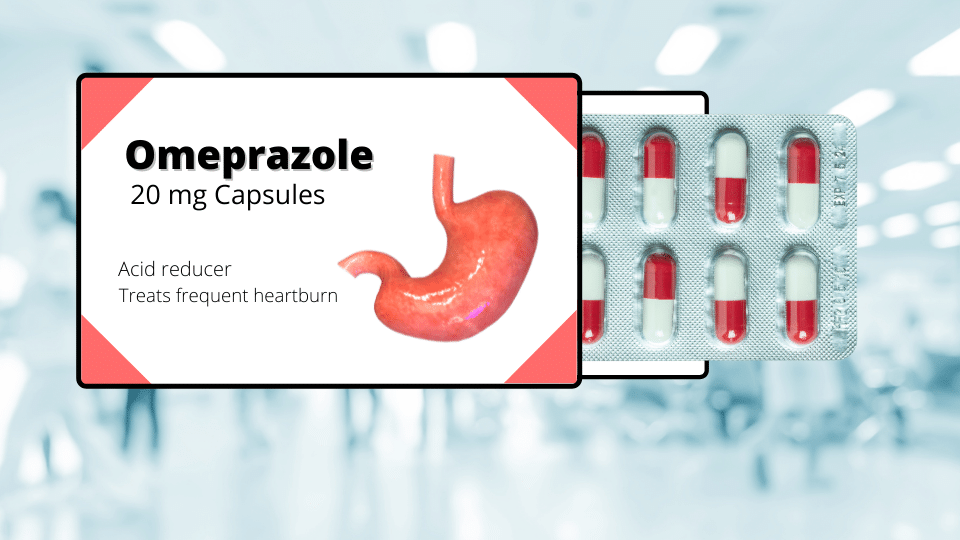Esomeprazole (Nexium) belongs to a group of medicine known as proton pump inhibitors, it acts by reducing the amount of acid the stomach produces, hence it is used to treat diseases that are caused (or worsened) by stomach acid (such as peptic ulcer, duodenal ulcers and GERD).
Nexium is the brand name for Esomeprazole, and it is available as: capsules, oral suspension, tablets and injection.
| Overview | |
| Generic name: | Esomeprazole |
| Brand names: | Nexium |
| Drug class: | Proton pump inhibitors |
Esomeprazole (Nexium) is used in the treatment of:
It’s best to take Esomeprazole before meals (preferably before breakfast).
For delayed-release capsules: the capsules should not be crushed, but if you have difficulty swallowing you can open the capsules and mix the granules with water. The granules should be swallowed without chewing.
For oral suspension: Empty the packet contents into 5 mL of water for 2.5 mg, 5 mg, and 15 mL of water for 10 mg, 20 mg, 40 mg. Stir well and drink it within 30 minutes.
For IV reconstitution: add 5 mL of normal saline (0.9% NaCl) to esomeprazole vial. The administration should be over a period of at least 3 minutes.
For IV infusion: dissolve the contents in 50 mL 0.9% NaCl, or Dextrose 5% in Water (D5W) of one vial. The administration should occur slowly over a period of 10-30 minutes.
For adults and Elderly:
1.) Erosive Esophagitis: 20mg - 40 mg once daily for 8 weeks.
2.) Zollinger-Ellison Syndrome: 40 mg twice daily.
3.) NSAID Gastric Ulcer: for treatment use 20 mg/day for 4–8 weeks. For prevention use 20mg - 40 mg once daily for up to six months.
4.) Gastroesophageal Reflux Disease (GERD): 20mg/ day or 40 mg/day for up to 10 days.
5.) H. Pylori Infection: in this case Esomeprazole is use with antibiotics including amoxicillin and clarithromycin, in a dose of 40 mg once daily.
Before taking esomeprazole, tell your doctor if you are allergic to Esomeprazole or any other kind of proton pump inhibitors.
Patients with liver impairment should consult a doctor before using this drug.
Esomeprazole will increase the risk of wrist and hip fractures, so it should be used with caution.
Pregnancy and breastfeeding
Esomeprazole is not recommended for use during pregnancy and breastfeeding because its safety has not been established.
Common side effects of Esomeprazole include:
- Headache
- Nausea
- Diarrhea
- Abdominal pain
Rare side effects include:
- Dizziness
- Muscle weakness
- Vomiting
- Hepatotoxicity
- Rash
Discuss the side effects with your doctor if they were severe.
Read Esomeprazole side effects in detail.
Several drugs and substances can interact with Esomeprazole resulting in undesired effects. Such interaction can affect the activity of the drug or increase the severity of side effects.
Interactions with drugs
Esomeprazole can form drug-drug interactions with the following drugs:
1. Clopidogrel (Plavix): Esomeprazole act by reducing clopidogrel effectiveness.
2. Warfarin: Esomeprazole may increase the anticoagulant effect of warfarin.
3. CYP3A4 inducers (e.g., carbamazepine, phenytoin, rifampin): these drugs may decrease the concentration of Esomeprazole.
4. Atazanavir, Digoxin, Iron, and Ketoconazole: the effect of these drugs may be decreased by Esomeprazole.
Interactions with Herbal medicines:
St. John’s wort may decrease the concentration of Esomeprazole.
1. Kizior, R.J. and Hodgson, B.B. (2018). Saunders nursing drug handbook 2019. Philadelphia: Saunders.
2. Kolesar, J.M. (2016). Top 300 pharmacy drug cards 2016-2017. Mcgraw-Hill.
3. Joint formulary committee, BNF 80 (The British National Formulary), 80th Revised edition, Pharmaceutical Press, London, United Kingdom, [2020]
Common side effects of Esomeprazole include: Headache, nausea, diarrhea, abdominal pain, flatulence. Find a list of other side effects in this article.

Omeprazole reduces the amount of acid the stomach produces; it is used for diseases which are caused (or worsened) by stomach acid. Omeprazole treats 4 different diseases: Heart burn, Indigestion…

The urethra is a muscular canal that extends from the neck of the bladder to the exterior of body. Read more about the anatomy of urethra in this article.

Chronic kidney disease (CKD) is a disease in which irreversible damage to the kidneys leads to a reduction in kidney function. CKD has 5 stages and many complications.

Learn about medical uses, safety profile, mechanisms and interactions of statins.

Comprehensive guide on Ozempic (semaglutide), including its uses, dosage, side effects, warnings, and interactions.
.png)